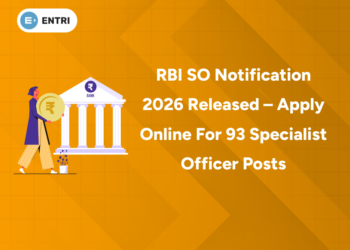Table of Contents
The Kerala Public Service Commission will seek qualified individuals for the Junior Lab Assistant positions in Medical Education (Category: 011/2022, 076/2022) to fill the 28 available positions. The Commission issued an official notification in this regard. Candidates between 18 and 39 of age limit can apply. Qualified individuals will choose through direct recruitment. But, before proceeding, aspirants should be familiar with the Junior Lab Assistant Recruitment 2023 Exam Pattern and Syllabus. Read on to get an outlook on the Kerala PSC Junior Lab Assistant Exam pattern and Syllabus. Visit the official page of the Kerala Public Service Commission for more details www.keralapsc.gov.in.
Join our Telegram channel to get Free study materials and quizzes
Kerala PSC Junior Lab Assistant 2023 – Overview
| Description | Details |
| Board Name | Kerala Public Service Commission |
| Post Name | Junior Lab Assistant |
| Category Number | 011/2022 & 076/2022 |
| Category | Syllabus |
| Method of Appointment | Direct Recruitment |
| Vacancy | 28 |
| Salary | Rs. 27900 – 63700 |
| Selection Process | Written exam/ OMR/ Interview |
| Official Website | www.kpsc.gov.in |
Kerala PSC Junior Lab Assistant 2023 Exam Date
1: Which Year First Assembly Election was held in Kerala?
Kerala PSC will announce the exam dates for Junior Lab Assistant Recruitment 2023 soon. Aspirants need to refer to the syllabus and prepare accordingly to crack the examination before the release of the exam date. Kerala PSC Junior Lab Assistant is a highly competitive exam. Hence Candidates should take the exams seriously and prepare well.
|
Kerala PSC Junior Lab Assistant Exam Date – Click here |
Enroll in Kerala's Top-rated Kerala PSC Coaching Program!
സർക്കാർ ജോലി എന്ന സ്വപ്നം ഇനി സ്വപ്നം മാത്രമല്ല! Join Entri's Kerala PSC Coaching Programs
Join Now!Kerala PSC Junior Lab Assistant Exam Pattern 2023
Kerala PSC released the pattern of exam for Junior Lab Assistant as in the following methods,
- Written test
- OMR
- Online test
The candidates are selected using a multiple-choice online exam. The written test is divided into three phases, each of which contains ten marks, for a total of 100 points. The Kerala PSC Junior Lab Assistant test pattern is summarised here.
|
Junior Lab Assistant Exam Pattern |
|
| PART I | Basic Laboratory Techniques
Blood and Phlebotomy Hematology Blood Banking and Immuno Hematology Clinical Pathology Biochemistry Microbiology |
| PART II | PHYSICS |
| PART III | CHEMISTRY |
| PART IV | BOTANY |
| PART V | ZOOLOGY |
| Total Marks | 100 Marks |
| Time Duration | 1 hour 30 minutes |
Kerala PSC Junior Lab Assistant Vacancy 2023
- The question is objective type and contains four optional answers for each question.
- The exam is conducted online mode.
- There are a total of 100 questions comprising 100 marks.
- There will be 10 sections of questions from each part, and acquire 10 marks for each section
- The time duration of the Kerala PSC Junior Lab Assistant exam is 1 hour and 30 minutes.
- The mode of language is English.

Grab Latest Kerala PSC study materials! Register Here!
KPSC Junior Lab Assistant Syllabus 2023
While studying, the syllabus 2023 can help you organize your test preparation and provide in-depth information about the exam. The syllabus is necessary for the preparation and acquisition of effective study materials. The detailed study materials are listed below.
PART – I
Basic Laboratory Techniques
- Knowledge of Laboratory chemicals
- Cleaning of glassware
- Cleaning and disinfection of Disinfectants used and biosafety precautions in case of
specimen spillage - Bio- medical waste management -categories of bio-medical waste.
- Basic first aid techniques for cuts & bruises, burn injury etc
- Common Instruments used in laboratories
- Distillation and deionisation apparatus and use
- Laboratory management system
Blood and Phlebotomy
- Methods of blood collection – Capillary Puncture Arterial puncture and venous puncture
- Sites of blood collection: Capillary and Venous.
- Anticoagulants used – advantages and disadvantages
- Identification of blood cells: Leishman’s stain Blood cell types: RBC, WBC, Platelets (Identifying characters and Normal Range )
Hematology
- Heamocytometry Counting chamber : improved Neubauer
- Total cell counts:
- RBC, WBC, Platelet, Absolute Eosinophil count. (Diluting fluids, Normal value, Clinical Significance),
- Reticulocyte count : Clinical significance
- Hemoglobin estimation : Enumerate methods ,WHO recognized method : cyanmethhaemoglobin method, significance.
- PCV – Methods, Wintrobe ‘s method, Normal value clinical significance.
- ESR- Method (westergren’s method), Normal value, Clinical Significance.
- Test for coagulation:
- Bleeding time methods & Normal value of Duke’s method.
- Clotting time methods & Normal value of Capillary tube method
- Automation- Heamotology analyser, Haemogram, CBC – principle
Blood Banking and Immuno Hematology
- Blood group antigens and antibodies.
- Blood group system. (ABO and Rh system in detail,)
- Blood grouping techniques.
1. Cell grouping and Serum grouping.
2. Slide and tube method
Transfusion phlebotomy
- Donor screening, Donor selection criteria.
- Blood bank-Anticoagulants
- Compatibility testing and issue of blood.
- Cross matching-Minor and Major. Mention 3 phases.
Clinical Pathology
- Analysis of Urine, Sputum, Stool, Semen, CSF
- Types of sample, collection of sample, Physical, Chemical & Microscopic examination techniques & their Importance
Biochemistry
- Blood Glucose estimation
- Types of samples: FBS, PPBS,RBS
- Methods of estimation.Normal value, Clinical significance,
- Relevance of HbAlc
- Renal function test
- Enumerate the common test included.
- Common method used for the estimation of Blood urea,
- Serum creatinine (normal values). Clearance test (Urea &
Creatinine) - Liver function test
- Common tests included. Method used for estimation of
- Bilirubin (Malloy and Evelyn method)
- Lipid profile
- Tests included in lipid profile
- Common method for the estimation of cholesterol.
- Other parameters of Diagnostic importance.
- Serum electrolytes: Sodium, Potassium. Normal value and
Clinical significance. - Name cardiac Markers.
- Name Tumor Markers.
- Clinically important hormones & enzymes
- Automation in Biochemistry
- Types of analyser, various Assay techniques, POCT etc
Microbiology
- Classification of bacteria based on Morphology.
- Sterilization methods.
- Hot Air Oven, Autoclave (Operation procedure , preparation of articles ,precautions to be taken and use)
- Disinfectants & Antiseptics (Application)
- Culture Media: Classification of culture media with example ( knowledge assessment)
- Culture Methods: Streak, Stroke, Stab, Lawn culture, Anaerobic technique (gaspak) (Knowledge assessment)
- Identification of bacteria
- Different methods
- Detection of motility : Names of different methods (Hanging Drop Method )
- Staining : (Simple stain, gram stain, AFB stain)- techniques and diagnostic significance.
- Biochemical tests : Oxidase, Coagulase, Catalase, & IMViC
- Serological techniques- Agglutination test- Widal test , Precipitation test- RPR/VDRL, ELISA, PCR
- Parasitology – 2 Marks
- Laboratory diagnosis of Malaria
- Disease, Mode of transmission, host, causative agent & types of Malaria
- Thick and thin smear preparation – advantages and disadvantages
- Stains used: Leishman, fildes JSB etc
- Other methods : card method , QBC
- Laboratory Diagnosis of Filariasis .
- Disease, mode of transmission, host and nocturnal habit.
- Lab diagnosis : Wet smear examination , thick smear examination, concentration techniques.
- Histotechnology and cytology histotechnology : – 5 Marks
- Tissue processing (steps of tissue processing), fixation techniques, Histokinette,
- Microtomes, staining: (H and E stain)
- Diagnostic cytology : Types of specimen , Processing , Fixation (fixatives used), Staining, advantages and application of diagnostic cytology
Enroll Now & Ace Your Exams!
PART – II
PHYSICS
Units and measurement : Units for measurement, CGS Unit , SI unit, Accuracy and errors in measurement, Significant figures Motion in one, two and three dimensions: Distance and displacement, Speed and velocity, Acceleration, Equations of motion, Projectile motion, Uniform circular motion.
Kinematics – Motion in a straight line and plane: Graphical representation of motions – Position time graph and velocity time graph, Equation of motion, Displacement and distance, Velocity and acceleration, Vector addition– Triangular law and Parallelogram law, Uniform circular motion – Centripetal force and acceleration.
Dynamics – Laws of motion and Work, Energy & Power: Newton’s laws of motion, Impulse and its application, Law of conservation of momentum – Recoil of gun, Friction – Laws of static and kinetic friction, angle of repose, Methods of reducing friction.
Different types of work, Kinetic and Potential energy, Power, Collision -Elastic and
Inelastic collision.
System of Particles and Rotational motion & Gravitation: Law of conservation of angular momentum and its application, Torque and Angular momentum, Moment of Inertia of regular bodies – Ring, disc, sphere and Cylinder, Theorem on Moment of Inertia – Parallel axes and Perpendicular axes, Kinetic energy of rolling bodies
Acceleration due to gravity (g) and its variation with depth and height, Orbital velocity and time period of satellite, Escape velocity, Kepler’s third law.
Mechanics of Solids and fluids: Elasticity – Stress and strain, Moduli of elasticity -Young, Bulk and rigidity, Stress strain graph, Fluid pressure, Pascal’s law and its applications, Surface tension, Viscosity, Bernoulli’s theorem and its application, Equation of continuity, terminal velocity.
Heat and Thermodynamics: Principle of mixture, Scales of temperature, Specific heat capacity, First and second law of thermodynamics, Isothermal and adiabatic process, Carnot’s Heat engine.
Oscillation & Waves: Simple Harmonic Motion (SHM), simple pendulum, Longitudinal and transverse waves,
Vibration in air column – Open pipe and closed pipe, Beats and doppler effect.
Electrostatics: Quantization of charge, Coulomb’s law, Electric field, Gauss’s theorem and its application,
Equi potential surfaces, Capacitance, Parallel plate capacitor, combination of capacitors-series & Parallel.
Electro dynamics- Current Electricity: Ohm’s law, Electric current and current density, Colour code of resistors, Resistivity and conductivity, Drift velocity and mobility, Potentiometer.
Moving charges and magnetism: Biot-Savart’s law and its application – circular coil, Solenoid and Toroid, Galvanometer to ammeter and voltmeter, Classification of magnetic materials – dia, para and ferro materials, Magnetic field lines.
Electromagnetic induction & AC: Faraday’s laws, Eddy current and its applications, Self induction, AC generator,
Transformers, Wattless current and Q-factor of LCR circuit, Reactance of ac circuits.
Electromagnetic waves: Properties of Electro magnetic waves and its uses, Electromagnetic spectrum.
Ray and Wave optics: Reflection of spherical mirrors, Refraction and its application, Total internal reflection and
its applications, Lens maker’s formula, Power of a lens, Combination of lens, Scattering and dispersion, Microscope, Interference -Young’s double slit experiment, Polarisation -Malu’s law and Brewster’s law.
Modern Physics: Dual nature of radiation & matter, Atoms & nuclei Photo electric effect, Einstein’s Photo electric equation, Matter waves, Bohr atom model -Spectral series of Hydrogen atom, Half life period and nuclear reactor.
Semiconductor physics: Concept of Energy band – Classification of materials – conductor, insulators and semiconductors, Properties of semiconductors, Dopping, Intrinsic and extrinsic semiconductor, N type and P type semiconductors, P N junction diode, Half wave and full wave rectifiers, Zener diode, Photo diode and LED.
PART – III
CHEMISTRY
- Physical Chemistry
- Inroganic Chemistry
- Organic Chemistry
PART – IV
BOTANY
CELL STRUCTURE AND FUNCTION
- Cell the unit of life
- Cell cycle and cell division
REPRODUCTION
- Reproduction in organisms
- Sexual Reproduction in flowering plants
BIOLOGY IN HUMAN WELFARE
- Strategies in enhancement in food production
BIOTECHNOLOGY
- Biotechnology principles and process.
- Biotechnology and its application.
ECOLOGY
- Organisms and Population
- Ecosystem
- Environmental issues
PART – V
ZOOLOGY
HUMAN PHYSIOLOGY
- Digestion and Absorption
- Breathing and exchange of gases
- Body fluids and circulation
- Excretory products and their elimination
- Locomotion and movement
- Neural Control and coordination
- Chemical coordination and intergration
- human reproduction
- Reproductive health
GENETICS
- Heredity and variation
- Molecular basis and inheritance
BIOLOGY IN HUMAN WELFARE
- Human Health and diseases
ANIMAL KINGDOM
- Characteristic features and examples of different phyla (Porifera, Coelenterate, Platyhelminthes, Aschelminthes, Annelida, Arthropoda, Mollusca Echinodermata, Chordate)
Start Your Preparations Now!
How to Download Kerala PSC Junior Lab Assistant Syllabus 2023
- Visit the official website of Kerala Public Service Commission at https://www.keralapsc.gov.in/.
- Select the Recruitment tab on the home page.
- Scroll down to the Download syllabus section.
- Go to the link and click it.
- Pdf of the Syllabus will appear.
- Then you can download the KPSC Junior Lab Assistant Syllabus.
- Finally, view The Kerala PSC Junior Lab Assistant syllabus and verify the details.
Download Pdf of the Kerala PSC Junior Lab Assistant Syllabus
Enroll in Kerala's Top-rated Kerala PSC Coaching Program!
സർക്കാർ ജോലി എന്ന സ്വപ്നം ഇനി സ്വപ്നം മാത്രമല്ല! Join Entri's Kerala PSC Coaching Programs
Join Now!Kerala PSC Junior Lab Assistant Cut Off 2023
The Kerala Public Service Commission determines the Junior Lab Assistant qualification cut-off yearly. The cut-off marks to qualify to vary by category, notably General, OBC, and SC/ST. The candidate must meet the minimum cut-off criterion to pass the Kerala PSC Junior Lab Assistant 2023 test.
Simultaneously with the publication of the results, the KPSC board would publish the Kerala PSC Junior Lab Assistant cut-off marks on its official website. Cut-off points will vary yearly depending on the number of candidates and openings.
Download Entri App! Start preparing for your Kerala PSC exam!
| Our Offerings | ||
| Kerala PSC HSA Exam Preparation | Kerala PSC HSST Exam Preparation | Kerala PSC Lecturer in Diet Coaching |
| Kerala PSC LP UP Assistant Coaching | KTET Coaching | SET Coaching |












